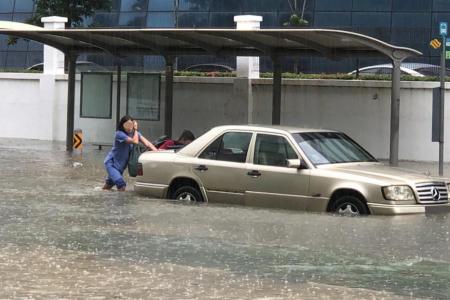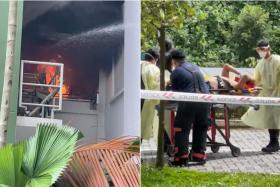Only 2 out of 9 flooded locations on Jan 8 had history of flooding
Building drains for every extreme rainfall event too costly, needs too much land
Only two of the nine locations in eastern Singapore that suffered flash floods on Jan 8 had a history of flooding, Minister for the Environment and Water Resources Masagos Zulkifli said yesterday.
He also said that with climate change, Singapore can expect intense rainfall to be the norm. This means flash floods could occur in areas with no history of flooding.
But he said that it was not feasible to build and expand drains to accommodate every extreme rainfall event, as that would be very costly and requires setting aside large tracts of land.
For instance, Bedok Canal is being widened from 38.5m to 44m at a cost of $128 million and the space can accommodate a 10-lane expressway. But to deal with extreme rainfall, the canal would have to be widened to at least 62m - a 16-lane expressway.
Mr Masagos said this in Parliament to five MPs, including Mr Murali Pillai (Bukit Batok) and Non-Constituency MP Dennis Tan, who asked about the floods.
On Jan 8, nine places were inundated with rain - the heaviest recorded total rainfall that morning was 118.8mm, half of Singapore's average rainfall for January - submerging cars, flooding bus cabins and disrupting businesses.
Although eight are susceptible to flash floods, only two had a history of flooding. They are Tampines Road, opposite Jalan Teliti, and Arumugam Road in the Ubi area.
Between 2015 and this year, there were five flash floods in Tampines Road and three in Arumugam Road.
"The flash floods were caused by the intense rainfall temporarily exceeding the existing design capacity of the drains," Mr Masagos said.
"Although the flood waters affected only certain stretches of the roads, and subsided within 15 to 60 minutes, we acknowledge that members of the public were inconvenienced and a number of cars had stalled," he added.
Every year, since 1980, heavy rain has occurred more often. Also, the annual maximum hourly rainfall has risen. It was about 80mm in 1980 and 90mm in 2016.
It has led the Government to invest in drainage infrastructure. Since 2012, drainage improvement works have been carried out at 327 locations and such upgrading is still going on at 73 other places, with 22 more planned for this year.
Get The New Paper on your phone with the free TNP app. Download from the Apple App Store or Google Play Store now



